You’ve been quietly pursuing your aromatic art for some time, what or who have been your greatest influences and why?
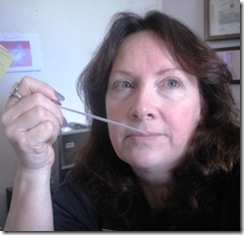 My maternal grandmother was a great influence, and she was something of a green witch. She passed when I was ten but we spent a lot of time together, puttering around in the garden. She could literally pull a twig off a plant and stick it in the ground somewhere else and that twig would grow into a bush or tree with little more care from her than watering and a little Gaelic lullaby. There was also this really cool hippie woman who lived in the mountains in a logging camp where I spent a couple of summers. My step-father was the camp “Bullcook”, a camp name for the maintenance man, so I had access to the cabins and the families who lived in them, including befriending the cool hippie woman. I can’t for the life of me remember her name, but I do remember she made everything from scratch, her incense, her wine, her bread, and she kind of took me in for a while, showing me how to make incense of the forest with stuff like tree sap, cedar bark and manzanita berries. I helped her pick elderberries one year and followed her through the process of making elderberry wine. She was a fascinating woman. A more recent influence has been Anastasia Angelopolous. Ana ran a Yahoo group years ago called “Blue Lotus Moon” — it was my first foray into using exotics like jasmine, neroli, rose, tuberose and orange blossom in soap. That really opened the door for me
My maternal grandmother was a great influence, and she was something of a green witch. She passed when I was ten but we spent a lot of time together, puttering around in the garden. She could literally pull a twig off a plant and stick it in the ground somewhere else and that twig would grow into a bush or tree with little more care from her than watering and a little Gaelic lullaby. There was also this really cool hippie woman who lived in the mountains in a logging camp where I spent a couple of summers. My step-father was the camp “Bullcook”, a camp name for the maintenance man, so I had access to the cabins and the families who lived in them, including befriending the cool hippie woman. I can’t for the life of me remember her name, but I do remember she made everything from scratch, her incense, her wine, her bread, and she kind of took me in for a while, showing me how to make incense of the forest with stuff like tree sap, cedar bark and manzanita berries. I helped her pick elderberries one year and followed her through the process of making elderberry wine. She was a fascinating woman. A more recent influence has been Anastasia Angelopolous. Ana ran a Yahoo group years ago called “Blue Lotus Moon” — it was my first foray into using exotics like jasmine, neroli, rose, tuberose and orange blossom in soap. That really opened the door for me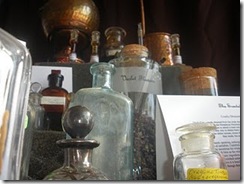 artistically. Ana still makes soaps using all those gorgeous ingredients and she sells her wares Ylva Rubenssen was one of the Natural Botanical Perfumers I met through that group, and she still stands out in my mind as one of the best NBP formulators I’ve ever known. She also talked about Siesta Botanicals who provides quality product and services. And then there’s Lisa Camasi. She’s been a huge, huge influence. Lisa’s like the Natural Botanical Perfume Oracle! She gives you the answer to your burning NBP questions, but she makes you work a little for them — it’s all about the hands-on experience. She’s a font of perfumery information, and if she ever decided to teach perfumery, I’d definitely be one of her first students. I gain a lot of influence from the aromatics themselves. I finally discovered what all the fuss was over tuberose. For years I’d been apparently receiving inferior tuberose absolutes because to me they all smelled like boiled beef wieners and metal. The tuberose I recently experienced dispels all the negative feelings I previously had for tuberose. I get the honey and the floral and the sweet. And I got inspired! When I find these gems, I’m gone, in the zone, furiously writing briefs for some new spectacular perfume to create. The fact is, if I ever attempted to create all the perfumes I’ve written down, I’d be formulating for the next 100 years or more! And last, but definitely not least, my biggest influences have been my mom and dad. My dad is deceased, but while here he was my biggest cheerleader. He never made me feel as if he was disappointed by the wacky career choices I made. He thought it was “cool” that his daughter could make soap and balms and perfumes. And my mom is a constant inspiration. She’s almost as excited about Natural Botanical Perfumery as I am. And she’s got the green witch touch too, growing many of the plants I use in my home distillations, like rosemary, lavender, rose geranium, and citrus. I get calls from her at least once a week and she usually says, “Hey! Come out here and pick this bush!”
artistically. Ana still makes soaps using all those gorgeous ingredients and she sells her wares Ylva Rubenssen was one of the Natural Botanical Perfumers I met through that group, and she still stands out in my mind as one of the best NBP formulators I’ve ever known. She also talked about Siesta Botanicals who provides quality product and services. And then there’s Lisa Camasi. She’s been a huge, huge influence. Lisa’s like the Natural Botanical Perfume Oracle! She gives you the answer to your burning NBP questions, but she makes you work a little for them — it’s all about the hands-on experience. She’s a font of perfumery information, and if she ever decided to teach perfumery, I’d definitely be one of her first students. I gain a lot of influence from the aromatics themselves. I finally discovered what all the fuss was over tuberose. For years I’d been apparently receiving inferior tuberose absolutes because to me they all smelled like boiled beef wieners and metal. The tuberose I recently experienced dispels all the negative feelings I previously had for tuberose. I get the honey and the floral and the sweet. And I got inspired! When I find these gems, I’m gone, in the zone, furiously writing briefs for some new spectacular perfume to create. The fact is, if I ever attempted to create all the perfumes I’ve written down, I’d be formulating for the next 100 years or more! And last, but definitely not least, my biggest influences have been my mom and dad. My dad is deceased, but while here he was my biggest cheerleader. He never made me feel as if he was disappointed by the wacky career choices I made. He thought it was “cool” that his daughter could make soap and balms and perfumes. And my mom is a constant inspiration. She’s almost as excited about Natural Botanical Perfumery as I am. And she’s got the green witch touch too, growing many of the plants I use in my home distillations, like rosemary, lavender, rose geranium, and citrus. I get calls from her at least once a week and she usually says, “Hey! Come out here and pick this bush!”
If you could pick the 10 most important aromatic ingredients, what would they be and why?
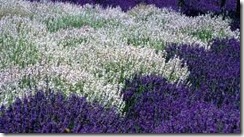 At first I thought this was going to be an easy question, but once I got started, I realized — just ten!? I’ll give it a shot. Petitgrain sur fleur neroli because it embodies all the wonderful aromatic nuances of both petitgrain and neroli, and it just smells so delicious! It’s a perfume in its own right. Geranium absolute — this a recent discovery for me, and I realized while sniffing it that it has some of the notes of a fresh rose, those spicy and green notes that are missing from rose otto. Oakmoss because it reminds me of home. I grew up in the Sierra Nevada mountains, and oakmoss is a scent which is nearly constantly wafting through the air in the summer months. And for what it does to a perfume, exalting. There’s something very visceral about oakmoss. Lavenders because of their versatility. Because of that white lavender from Samara Botane, and a hand full of really extraordinary lavenders I received in a swap last year, I’ve completely rearranged my thinking regarding lavender. The scent profiles run the gamut from exquisitely floral to abrasively herbal. Patchouli because — well, because it’s patchouli! Earthy, warm, herby — dirty! Love it. Vetiver used to be something I couldn’t stand using (since mixing it once with cocoa absolute and a few other dark oils and getting something that smelled like it needed to be scraped off the bottom of a shoe) but now I love the stuff. Again, the scent spectrum for vetiver runs from floral Sri Lankan, woody smoky Bourbon, powdery sweet Haitian, to the bitter tobacco of the Indonesian. Roses — all of them. No explanation necessary. Bergamot because it’s so darned versatile. The floral notes of bergamot make it “work” with almost anything. Vanilla because it’s luscious and sweet and comforting. And tuberose. *Swoon*
At first I thought this was going to be an easy question, but once I got started, I realized — just ten!? I’ll give it a shot. Petitgrain sur fleur neroli because it embodies all the wonderful aromatic nuances of both petitgrain and neroli, and it just smells so delicious! It’s a perfume in its own right. Geranium absolute — this a recent discovery for me, and I realized while sniffing it that it has some of the notes of a fresh rose, those spicy and green notes that are missing from rose otto. Oakmoss because it reminds me of home. I grew up in the Sierra Nevada mountains, and oakmoss is a scent which is nearly constantly wafting through the air in the summer months. And for what it does to a perfume, exalting. There’s something very visceral about oakmoss. Lavenders because of their versatility. Because of that white lavender from Samara Botane, and a hand full of really extraordinary lavenders I received in a swap last year, I’ve completely rearranged my thinking regarding lavender. The scent profiles run the gamut from exquisitely floral to abrasively herbal. Patchouli because — well, because it’s patchouli! Earthy, warm, herby — dirty! Love it. Vetiver used to be something I couldn’t stand using (since mixing it once with cocoa absolute and a few other dark oils and getting something that smelled like it needed to be scraped off the bottom of a shoe) but now I love the stuff. Again, the scent spectrum for vetiver runs from floral Sri Lankan, woody smoky Bourbon, powdery sweet Haitian, to the bitter tobacco of the Indonesian. Roses — all of them. No explanation necessary. Bergamot because it’s so darned versatile. The floral notes of bergamot make it “work” with almost anything. Vanilla because it’s luscious and sweet and comforting. And tuberose. *Swoon*
How much do you rely on actual textbooks and how much of your teaching comes from personal experimentation? If you could split these into percentages, how would this be reflected?
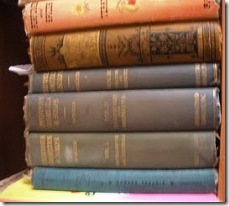 There is nothing I teach in the course that I haven’t actually done. I am definitely a hands-on learner, so I may read on a subject to get the gist of how something works, but I do to get to the practical application — I do and do again until I get it right. Right now I’m experimenting with how to standardize tinctures and evulsions. I have all the necessary equipment and am conducting trials as to how to make them work. I will have to hit up a chemist or wine maker to mentor me through the process. I have a tacit rule of thumb in that I conduct stringent field trials and bench tests before ever including any of the date in the course curriculum.
There is nothing I teach in the course that I haven’t actually done. I am definitely a hands-on learner, so I may read on a subject to get the gist of how something works, but I do to get to the practical application — I do and do again until I get it right. Right now I’m experimenting with how to standardize tinctures and evulsions. I have all the necessary equipment and am conducting trials as to how to make them work. I will have to hit up a chemist or wine maker to mentor me through the process. I have a tacit rule of thumb in that I conduct stringent field trials and bench tests before ever including any of the date in the course curriculum.
Those who practice natural perfumery are beginning to shy away from traditional perfumery training. Is it because so much emphasis is put on synthetics, and what are the factors that have spurred those working with naturals to seek or create perfumery training that focuses exclusively on natural ingredients?
I don’t think perfumery, as an art form, can be quantified. The approach is as individual as the perfumer. As such, I think our course offers unique aspects as my personal experience, training and “touch”.
Do you find that most of your students come with a previous experience, say in aromatherapy or other related business that deals with scents, or are they completely untrained with little odor recognition and simply like the idea from an intellectual standpoint?
They run the gamut. We have students from every color of the perfumery spectrum. There are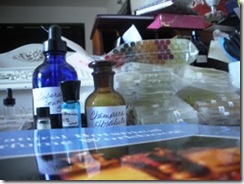 laypersons, professionals, aromatherapists, aspiring perfumers — you name it. We strive to make our course one in which there is room for all. Everyone can feel comfortable, everyone can learn. We are apolitical. We support one another and everyone leaves the course richer than they started, with more knowledge and a larger network and community. Let me amend that — a lot of our students don’t leave. They stay on to mentor acolytes!
laypersons, professionals, aromatherapists, aspiring perfumers — you name it. We strive to make our course one in which there is room for all. Everyone can feel comfortable, everyone can learn. We are apolitical. We support one another and everyone leaves the course richer than they started, with more knowledge and a larger network and community. Let me amend that — a lot of our students don’t leave. They stay on to mentor acolytes!
It has often been said that not everyone can become a ‘nose’, with the capability of discerning and identifying thousands of different scent molecules. What stages of development do you think your perfume training gives a student in developing this ability, and what is your opinion about this somewhat limiting statement based on your experience working with developing a student’s abilities?
Again, like dance or painting, we have natural ability, and then we have training and hard work. What may appeal to you, say a Warhol, may not appeal to me, who likes Waterhouse. That’s what is so great about this medium, there’s room for everyone, and just when you think you’ve smelled it all, a fresh new talent, like rising stars Jill McKeever and Jaymie Smith, startles us all with something new and wonderful. There’s a scene in the movie “All That Jazz” where Joe Gideon tells Victoria, and I’m paraphrasing a bit, “I can’t make you a great dancer. I don’t even know if I can make you a good dancer. But if you hang in there, I know I can make you a better dancer.” That’s us in a nutshell!
I’ve often felt that it takes time and certainly hard work to establish a vocabulary that intellectually describes the myriad senses, thoughts and feelings that come into play when working with aromatics. What advice can you give to prospective students or even the layperson who wants to embark on understanding odors and articulate them well?
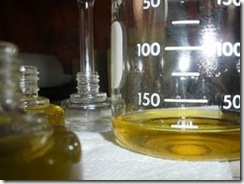 Smell consciously, and study and do. The first step to building a full aromatic vocabulary is to train oneself to smell consciously, every day, and write down whatever thoughts come through, no matter how strange they may be. Not everyone does this conscious smelling thing, but as a perfumer, I feel it’s extremely important to mentally acknowledge every scent and think about how the scent makes me feel.
Smell consciously, and study and do. The first step to building a full aromatic vocabulary is to train oneself to smell consciously, every day, and write down whatever thoughts come through, no matter how strange they may be. Not everyone does this conscious smelling thing, but as a perfumer, I feel it’s extremely important to mentally acknowledge every scent and think about how the scent makes me feel.
Do you feel that you are somewhat limited in an online course study and that some aspects might be better understood in a classroom setting, and how do you overcome any barriers this might present?
I don’t feel there are any significant limitations in our online course. We provide the students with workbooks and evaluation and formulator’s kits, so everyone starts at the same place, and works at the same pace. Teaching locally limits our reach. We have students who live in Brazil, France, Canada, Norway, Australia, England, the US — there is no way that kind of international diversity could happen on a local level, especially for a course that spans a year of instruction.
You know that I, as a supplier, am very committed to insuring not only the sustainability of aromatics ingredients, but protecting the indigenous cultures who produce them. What do you convey to your students along those lines? Do you exclude any aromatic ingredients for ecological reasons? What are they and why?
I know this is going to sound odd, but I aspire to be like Gandhi: I am the change I want to see in the aromatic world. It goes without saying that I eschew such cruelly obtained ingredients as civet and musk; these, I feel, will only serve to infuse the resultant product with negativity. We teach our students the facts about civet and musk, ambergris and castoreum, sandalwood, oudh, rosewood and other oils on the verge of extinction, whether it’s about unethical or illegal use or unsustainable sources, and we allow the students to make their own decisions about these products. We do, however, attempt to show the students methods of creating alternative and sustainable botanical profiles for the above mentioned oils.
What do you see for the future of natural perfumery? What are some of the successes, and what obstacles are presented? What community or networking efforts might be developed that continue to elevate this fine art?
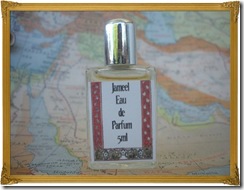 This field of artistic expression is limitless. Just when I think I’ve seen it all, someone new comes along with something astonishing to share. If you check in to LPR, you can keep abreast of many of the success stories in our field. There is no obstacle that cannot be overcome. It has been said of me that I walk softly and carry a big scent strip — I’m not an activist, I’m more of the mouse in the corner, quietly and diligently doing my own thing. If people like what they see — and smell — they’re welcome to join in. The soapbox is not for me, it’s not my style. I think that simply by the Zen of doing, we elevate the art form. As Natural Botanical Perfumers, I believe we must support each other, lift one another up. Geesh, we have enough to worry about with the coming FDA changes, and the IFRA breathing down everybody’s necks.
This field of artistic expression is limitless. Just when I think I’ve seen it all, someone new comes along with something astonishing to share. If you check in to LPR, you can keep abreast of many of the success stories in our field. There is no obstacle that cannot be overcome. It has been said of me that I walk softly and carry a big scent strip — I’m not an activist, I’m more of the mouse in the corner, quietly and diligently doing my own thing. If people like what they see — and smell — they’re welcome to join in. The soapbox is not for me, it’s not my style. I think that simply by the Zen of doing, we elevate the art form. As Natural Botanical Perfumers, I believe we must support each other, lift one another up. Geesh, we have enough to worry about with the coming FDA changes, and the IFRA breathing down everybody’s necks.
We are actively seeking Natural Botanical Perfumery students. Anyone interested is heartily encouraged to contact us for details on enrollment at www.naturalperfumeacademy.com. We guarantee learning in a warm, respectful, supportive environment, and as such are always looking to strengthen our ranks. We’ve filled the current course session which begins May 24th, but are beginning a new course in September 2010 with ten spaces available. We’re also adding four additional courses, two self-study and two correspondence. More information regarding those courses will be posted on the website some time in June 2010. We added all these extra courses because this year we were inundated with requests for enrollment, but a lot of factors prevented students from gaining access to the May session.
##############
This month’s Winged Seed Newsletter is out and features new Samara Botane/Nature Intelligence offerings and specials, as well as tidbits you might not know about carbohydrates and some thoughts on moving your body more. Sign up here if you want to receive our newsletters.